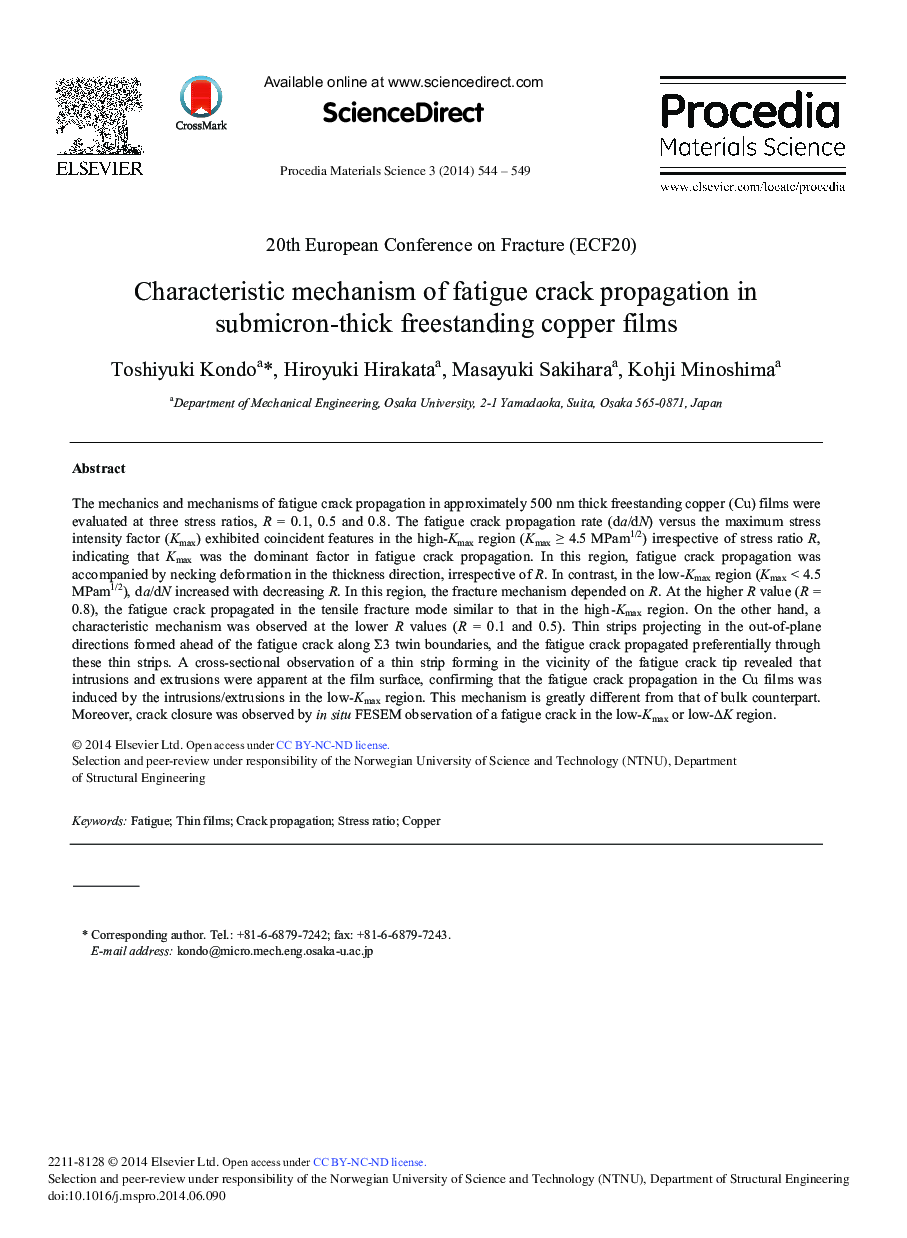| کد مقاله | کد نشریه | سال انتشار | مقاله انگلیسی | نسخه تمام متن |
|---|---|---|---|---|
| 1634830 | 1516782 | 2014 | 6 صفحه PDF | دانلود رایگان |

The mechanics and mechanisms of fatigue crack propagation in approximately 500 nm thick freestanding copper (Cu) films were evaluated at three stress ratios, R = 0.1, 0.5 and 0.8. The fatigue crack propagation rate (da/dN) versus the maximum stress intensity factor (Kmax) exhibited coincident features in the high-Kmax region (Kmax ≥ 4.5 MPam1/2) irrespective of stress ratio R, indicating that Kmax was the dominant factor in fatigue crack propagation. In this region, fatigue crack propagation wasaccompanied by necking deformation in the thickness direction, irrespective of R. In contrast, in the low-Kmax region (Kmax < 4.5 MPam1/2), da/dN increased with decreasing R. In this region, the fracture mechanism depended on R. At the higher R value (R = 0.8), the fatigue crack propagated in the tensile fracture mode similar to that in the high-Kmax region. On the other hand, acharacteristic mechanism was observed at the lower R values (R = 0.1 and 0.5). Thin strips projecting in the out-of-plane directions formed ahead of the fatigue crack along Σ3 twin boundaries, and the fatigue crack propagated preferentially through these thin strips. A cross-sectional observation of a thin strip forming in the vicinity of the fatigue crack tip revealed that intrusions and extrusions were apparent at the film surface, confirming that the fatigue crack propagation in the Cu films was induced by the intrusions/extrusions in the low-Kmax region. This mechanism is greatly different from that of bulk counterpart. Moreover, crack closure was observed by in situ FESEM observation of a fatigue crack in the low-Kmax or low-ΔK region.
Journal: Procedia Materials Science - Volume 3, 2014, Pages 544-549